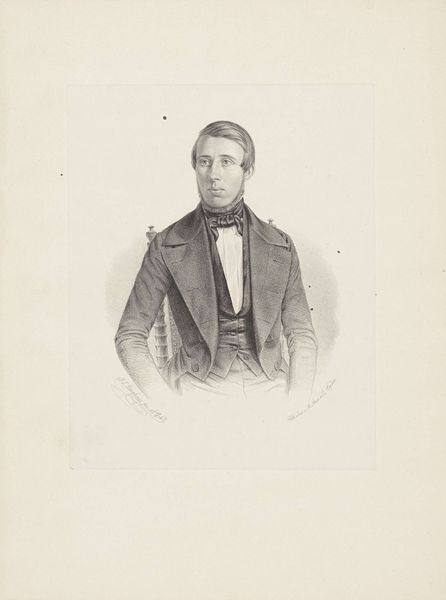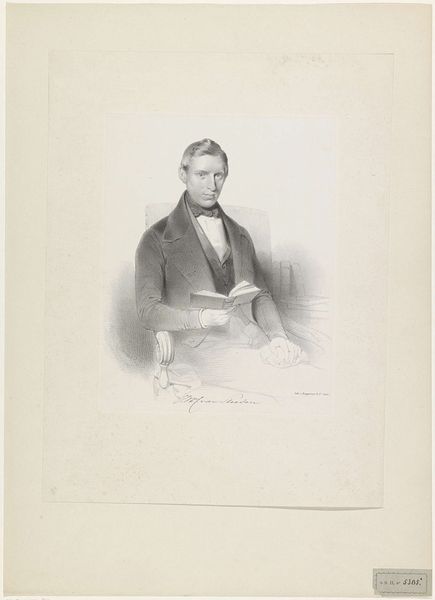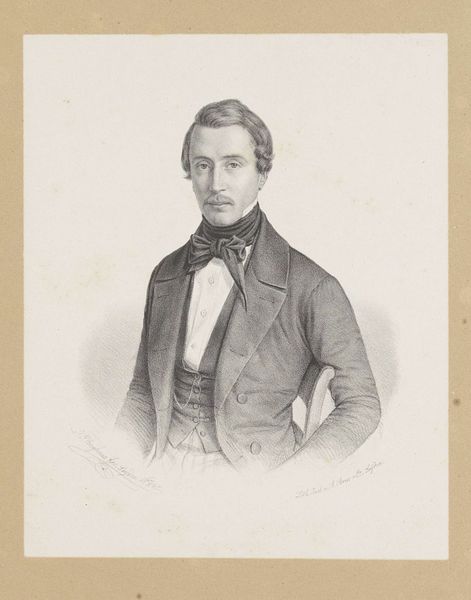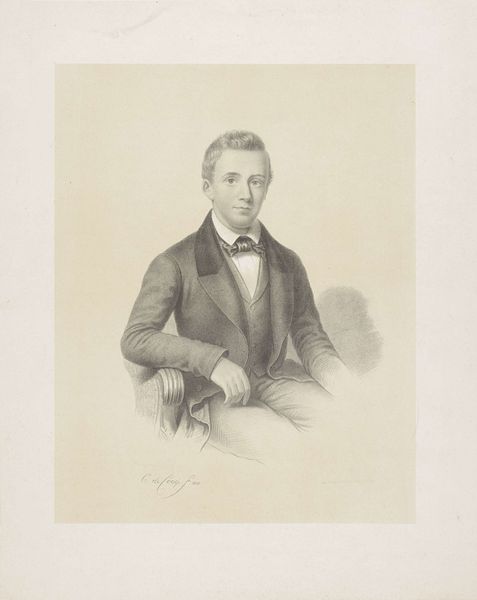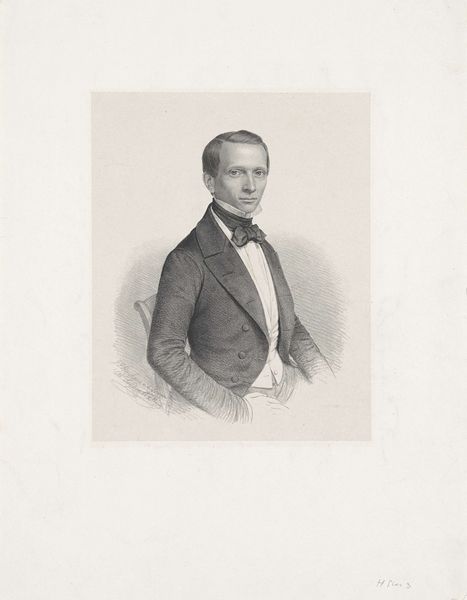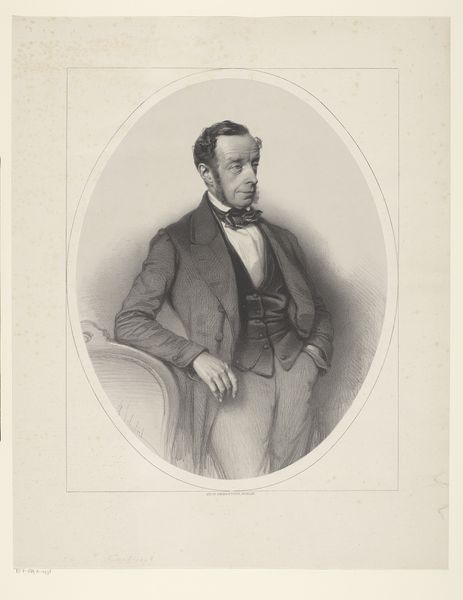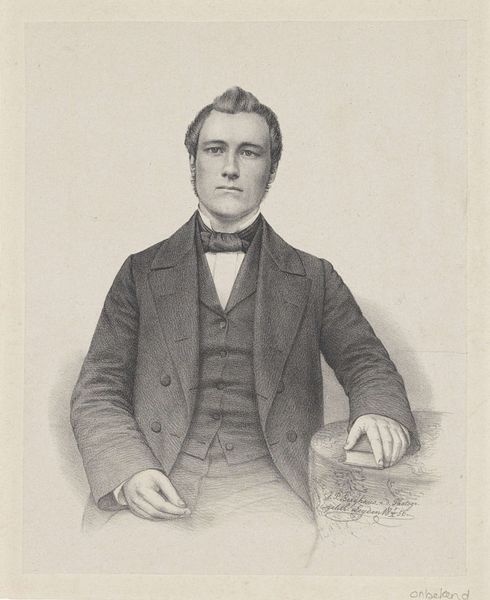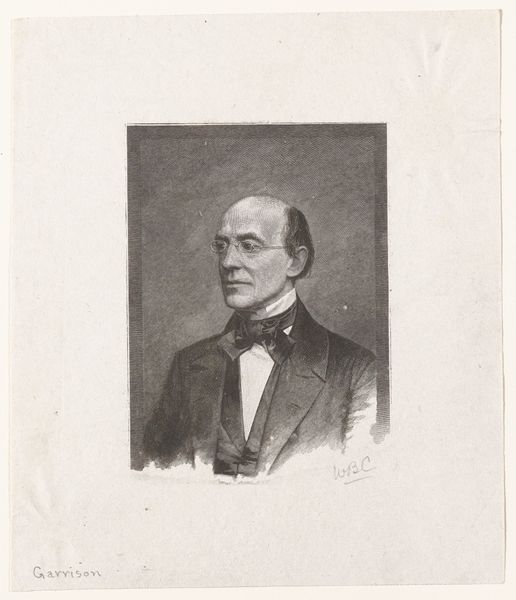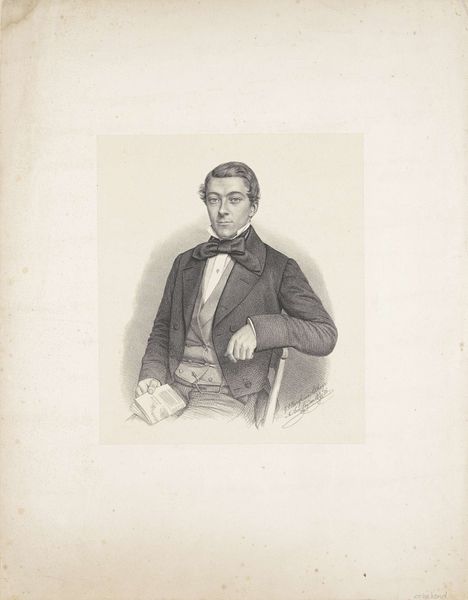
drawing, pencil, graphite
#
portrait
#
drawing
#
charcoal drawing
#
historical photography
#
pencil drawing
#
pencil
#
graphite
#
academic-art
#
graphite
#
realism
Dimensions: height 548 mm, width 410 mm
Copyright: Rijks Museum: Open Domain
Curator: What a compelling image. Here we have a graphite portrait of Guillaume Groen van Prinsterer, rendered sometime between 1867 and 1873. Editor: The stark monochrome immediately creates a sense of gravitas. The figure seems self-possessed, perhaps a touch severe. It feels like a statement of authority, of undeniable presence. Curator: Absolutely. Van Prinsterer was a significant figure, a Dutch politician and historian. Examining this image, we must understand the power structures inherent in portraiture of this era and how they intersect with Van Prinsterer’s role in shaping Dutch political thought. His anti-revolutionary stance and his influence on Christian-democratic politics certainly colored the perception of figures like him. Editor: The artist uses symbols, deliberate visual cues that place him in history. Take the subject's dark clothing; the stiff bow tie suggests an adherence to formal social codes and traditions. Even the draped fabric in the background whispers of wealth and influence. This isn't just a picture of a man, it’s an icon. Curator: I agree, but the choice of medium is also important. A graphite drawing lends itself to realism, yes, but also a sense of…accessibility? Perhaps a deliberate attempt to counteract the elitism he sometimes faced. It positions him, perhaps strategically, as a man of the people, rendered without the embellishments of color or excessive ornamentation. Editor: It’s fascinating how a simple portrait becomes a layered visual text, each line and shadow imbued with intention. Curator: Precisely. And considering the religious and political climate of the Netherlands at that time, every element can be decoded through lenses of gender, class, and ideological affiliation. What messages was the artist hoping to communicate and to whom? Editor: Ultimately, it feels like this drawing strives to cement a lasting memory of Van Prinsterer, presenting a clear, unwavering image of authority to future generations. The graphite elevates the symbolic power. Curator: By understanding those intertwined contexts, the drawing evolves into a complex reflection of power and legacy. Editor: Yes. There’s so much contained in what appears to be a simple portrait.
Comments
No comments
Be the first to comment and join the conversation on the ultimate creative platform.

